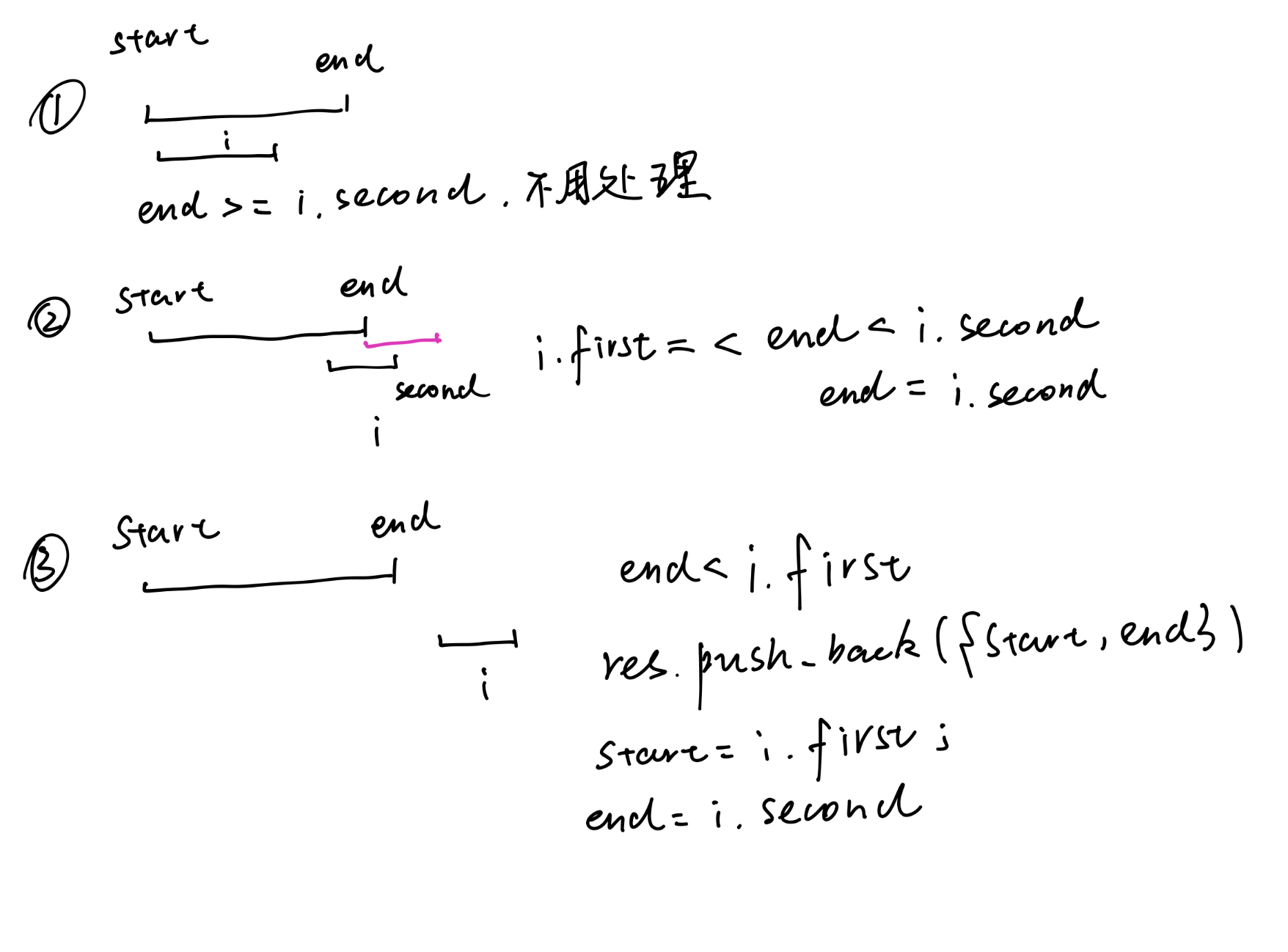区间合并
给定 n 个区间 [li,ri],要求合并所有有交集的区间。
注意如果在端点处相交,也算有交集。
输出合并完成后的区间个数。
例如:[1,3] 和 [2,6] 可以合并为一个区间 [1,6]。
输入格式
第一行包含整数 n。
接下来 n 行,每行包含两个整数 l 和 r。
输出格式
共一行,包含一个整数,表示合并区间完成后的区间个数。
数据范围
1≤n≤100000,
−10^9≤li≤ri≤10^9
输入样例:
输出样例:
将区间的左右端点存储起来,将左端点排序后分类讨论。

1
2
3
4
5
6
7
8
9
10
11
12
13
14
15
16
17
18
19
20
21
22
23
24
25
26
27
28
29
30
31
32
33
34
35
36
37
| #include<iostream>
#include<vector>
#include<algorithm>
using namespace std;
vector<pair<int,int>> a,res;
int main(){
int n;
cin>>n;
while(n--){
int l,r;
cin>>l>>r;
a.push_back({l,r});
}
sort(a.begin(),a.end());
int start=a[0].first;
int end=a[0].second;
for(auto i:a){
if(end>=i.first&&end<i.second) end=i.second;
if(end<i.first){
res.push_back({start,end});
start=i.first;
end=i.second;
}
res.push_back({start,end});
cout<<res.size();
return 0;
}
|
